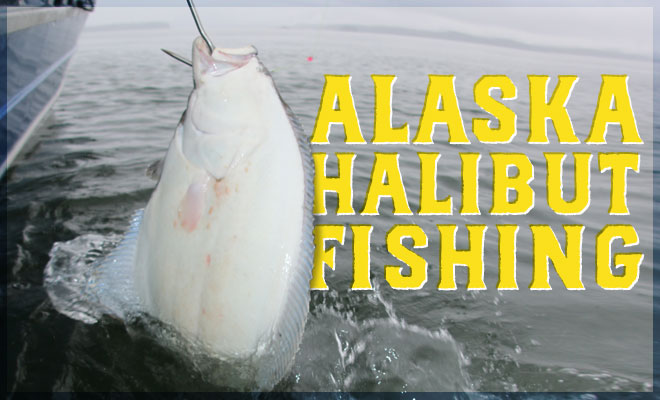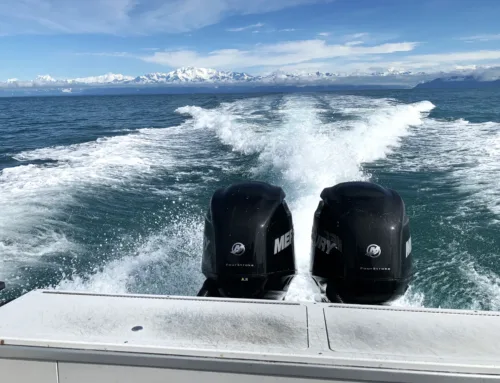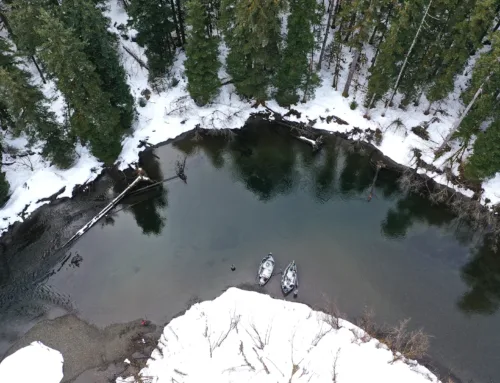Alaska halibut fishing rallies anglers from all over the world in pursuit to bring home the moist, flakey texture of halibut that are abundant in Alaskan waters.
Why Alaska halibut fishing?
Pacific halibut are among the largest fish swimming in Alaska and are the largest member of the flatfish family. An average halibut is about 25 pounds, and the Alaska state record is 459 pounds. So these fish get BIG! Halibut are a firm, white-meat fish, and are among the highest-quality table fare of all the fish species. They are strong, fun to catch, and produce a lot of edible meat. On average, about 2/3 of a halibut is boneless fillets, making for lots of meals to be enjoyed all year long.
Halibut migrate from deep water in the winter, into shallower water in the late spring, where they stay until late fall growing larger. They feed on herring, salmon, octopus, cod, and probably just about anything they can fit in their mouth. It’s during this time period that anglers target the species. In many coastal communities around Alaska, halibut are targeted in 100- to 400 feet of water. Tides are generally large in Alaska, so that many charters and private sportfishermen are most productive as the tide weakens. They find that the two hours on either side of slack tide is generally the time to catch them.
Halibut are highly olfactory based, so setting up on anchor and putting out a scent trail is always a good way to ring the dinner bell. It’s not unusual to wait for a few hours without activity until the halibut finds your bait, and then experience steady action. Other times it seems that the ocean floor is littered with hard-pulling flatties, and the bites happen as soon as the bait or jig gets near the bottom.
Fishing Methods
Two methods are generally employed to catch halibut: bait, weight and wait for a bite or jig. It’s our general experience that scent brings the fish to the boat and jigs entice them to bite. It’s also generally accepted that pounding a jig on the bottom sends off a sound wave that also brings halibut in to investigate.
Since Alaska halibut can reach huge proportions, anglers generally use stout rods, big reels and strong lines. When fishing bait—which is usually herring, salmon parts that are legal to use like heads, cod, and octopus—many anglers use large circle hooks and heavy weights to hold the bait on or near the bottom. It’s not uncommon to see 16/0 circle hooks and 16- to 20 ounces of lead employed when fishing for these oversized predators. When fishing jigs, 12- to 24-ounce jigs, either lead head with grubs or long, thin slabs of metal, are the most commonly used lures. Both techniques require stout rods and strong reels. Halibut are apex predators and will chase and smash a jig with ferocity.
Yakutat Bay, Alaska halibut fishing
Yakutat offers a premium location to fish for halibut and the charter captains at Yakutat Lodge know how to put you on the fish. Fishing is done within 15 miles off the dock, which makes for a very short boat ride to the fish. This is usually not the case in most ports around Alaska.
Alaska halibut fishing is done in Yakutat Bay, which is normally a fairly calm body of water, making it very well-suited for novice ocean anglers and those that are prone to seasickness. Halibut can normally be found in 80- to 150 feet of water which makes fishing and bait checks a manageable task. Many locations around Alaska demand feature deeper water fishing spots, which can be difficult and tiring to fish for these oversized bottom dwellers.
Yakutat Lodge also knows how to help you catch other types of bottomfish when out on the saltwater. Yakutat Bay holds lingcod, which are aggressive, predatory fish that are awesomely ugly and marvelously delicious. It also holds several species of pelagic rockfish, and catches of large, black rockfish are common. These additional species provide added action and excellent table fare.
Added Bonus
A tertiary bonus to fishing in Yakutat Bay is the chance at catching a king salmon. King salmon roam the waters around Yakutat, and while not a guarantee, when they are present they can often be caught. The largest salmon species in Alaska, king salmon are on many angler’s bucket-species list, and are both rewarding to catch and excellent to eat. While bottom fishing is typically done on anchor or while drifting, fishing for king salmon is most typically done while trolling.
Come to Yakutat Lodge and experience Alaska halibut fishing for yourself! Enjoy the variety and bounty of our near shore saltwater fisheries. You won’t have to endure a long boat ride, big seas, strong tides or deep water. Rather you can catch limits of delicious fish that pull hard and are amazing to catch. We will provide all the tackle and bait, teach you how to catch these varied species, fillet the fish and pack them up for you to take home and enjoy for the rest of the year. See you here!





